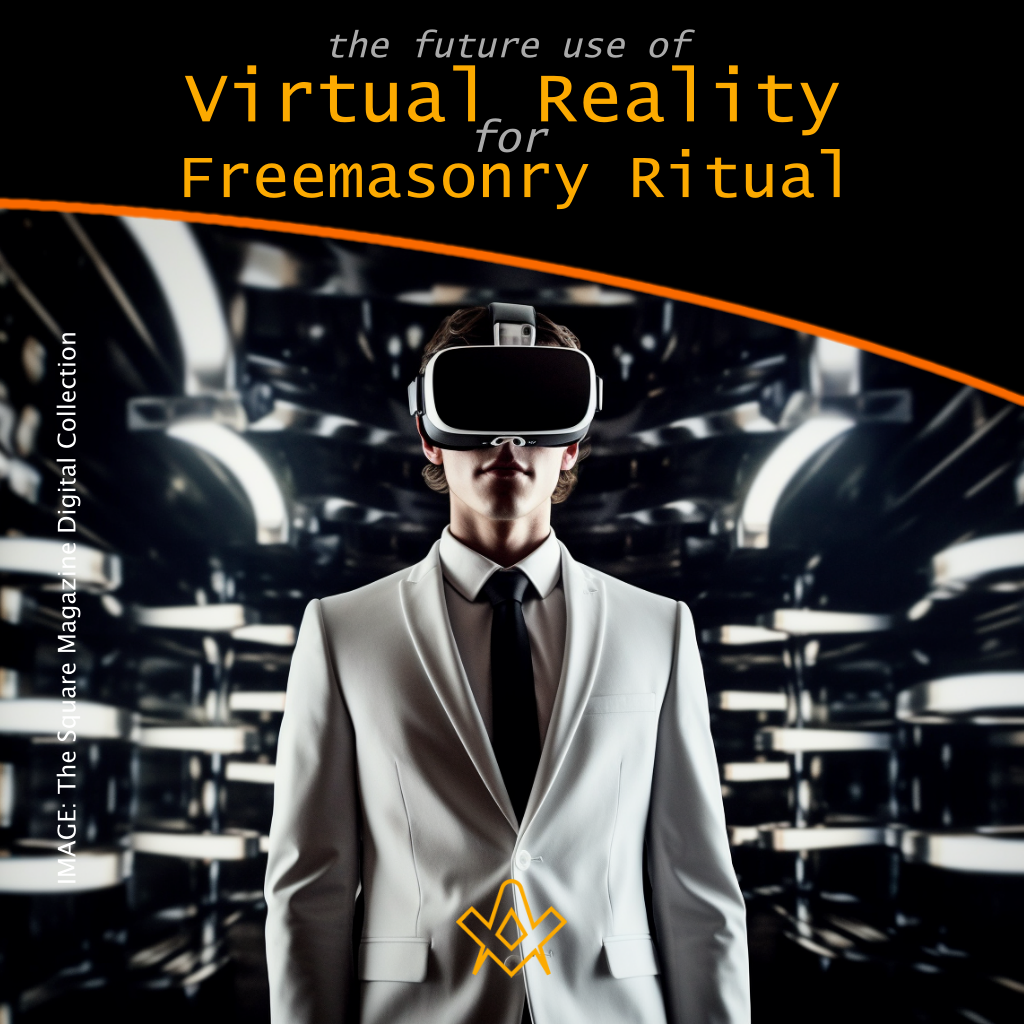Experience Freemasonry like never before! Dive into our ground-breaking research on harnessing Virtual Reality (VR) for Freemasonry rituals. We’re transforming centuries-old traditions into immersive, accessible experiences.
Discover how we’re bridging the gap between historical symbolism and cutting-edge technology. Join us on this exciting journey into the future of Freemasonry!
The Future Use of Virtual Reality for Freemasonry Ritual
The advent of Virtual Reality (VR) technology has opened up new possibilities for immersive and interactive experiences across various domains.
One such domain that stands to benefit from these advancements is Freemasonry, a fraternal organization rich in history and tradition. This paper explores the potential use of VR for Freemasonry rituals, a cornerstone of the Masonic experience.
Freemasonry rituals, steeped in symbolism and allegory, are traditionally performed in a physical space with members present. These ceremonies involve a series of ritualistic steps that are carried out by Lodge members, each imbued with deep meaning.
However, the physical constraints of these rituals pose challenges in terms of accessibility and participation. VR technology, with its ability to simulate physical presence and enable interaction in a virtual environment, presents a unique solution to these challenges.
This paper presents a comprehensive exploration of the implementation of VR in Freemasonry rituals, following a structured approach known as the Tree of Thoughts (ToT) method.
This method allows for a systematic exploration of the problem space, breaking it down into manageable ‘thoughts’ or units of consideration.
The paper first delves into understanding the intricacies of Freemasonry rituals, highlighting the key elements that need to be preserved in a virtual environment.
It then explores the capabilities and limitations of current VR technology, focusing on how these can be leveraged or mitigated to create an authentic and immersive Freemasonry experience.
The core of the paper discusses the design and implementation of the VR Freemasonry experience, detailing the creation of a virtual Lodge, the replication of ritual elements, and the scripting of interactions. Special attention is given to user experience and accessibility, ensuring that the VR Freemasonry experience is intuitive, comfortable, and accessible to all members.
Finally, the paper emphasizes the importance of continuous improvement in this new and evolving field. It discusses the need for ongoing feedback, updates, and improvements, as well as the importance of keeping up with advancements in VR technology.
Through this exploration, the paper aims to shed light on the potential of VR as a tool for enhancing Freemasonry rituals, offering a new perspective on how technology can be used to preserve and enrich historical and symbolic practices.
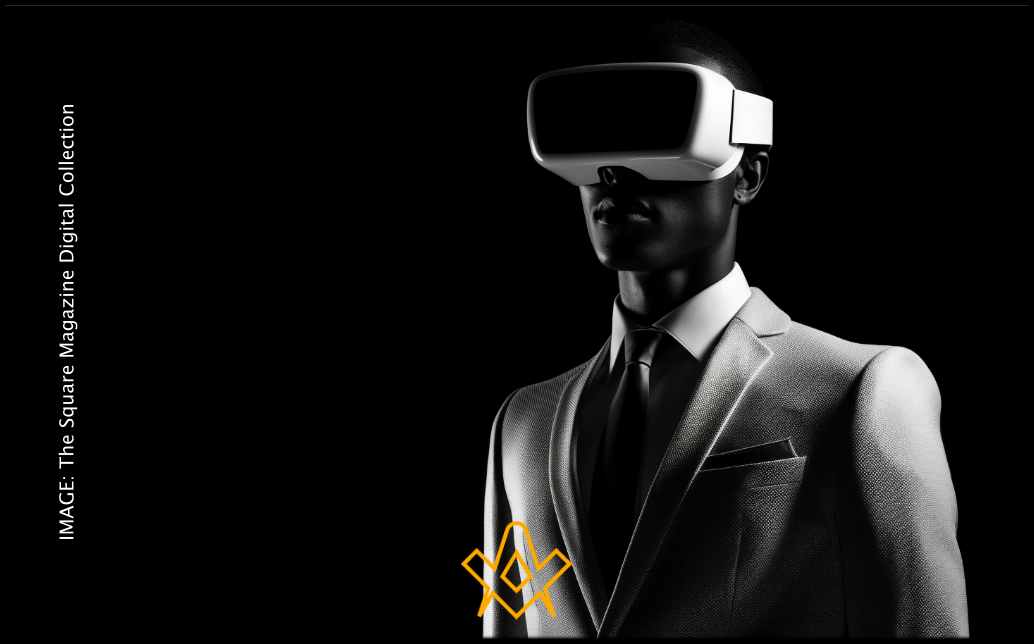
Now, let’s start exploring these thoughts in more detail. Which thought would you like to explore first?
Thought 1: Understanding Freemasonry Rituals
Freemasonry rituals are a cornerstone of the Masonic experience. These ceremonies are rich with symbolism and allegory, often drawing from ancient architectural symbolism and biblical narratives. They are traditionally performed in a Masonic Lodge and involve a series of ritualistic steps that are carried out by Lodge members.
Understanding these rituals in detail is crucial for replicating them in a virtual environment. This involves studying the rituals, understanding the symbolism, and identifying the key elements that must be preserved in the virtual version.
Here are some key aspects to consider:
Ritual Structure: Freemasonry rituals follow a specific structure and order. Understanding this structure is important for creating an accurate virtual representation.
Symbolism: Freemasonry rituals are rich with symbolism. Each symbol has a specific meaning and role in the ritual. These symbols need to be accurately represented in the virtual environment.
Physical Environment: Freemasonry rituals are performed in a Lodge, which has specific architectural features and symbolic elements. The virtual environment should accurately replicate these features.
Ritual Participants: The rituals involve specific roles and responsibilities for Lodge members. Understanding these roles is important for scripting the interactions in the virtual environment.
Ritual Actions: The rituals involve a series of actions, such as processions, gestures, and spoken words. These actions need to be accurately represented in the virtual environment.
By understanding these aspects of Freemasonry rituals, we can ensure that the virtual representation is accurate and meaningful. The next step would be to explore the capabilities of Virtual Reality technology and how it can be used to replicate these elements.
Thought 2: Virtual Reality Capabilities
Virtual Reality (VR) technology has the potential to create immersive, interactive environments. It can simulate physical presence in real or imagined worlds and enable the user to interact with that world. Understanding these capabilities is key to designing a VR Freemasonry experience.
Here are some key aspects to consider:
Hardware: VR experiences are typically accessed through VR headsets. These devices track the user’s head movements to provide a 360-degree view of the virtual environment. Some VR systems also include handheld controllers that track hand movements, allowing users to interact with the virtual environment.
Software: VR experiences are created using specialized software. This software allows developers to create 3D models, script interactions, and design immersive environments. There are several VR development platforms available, each with its own capabilities and limitations.
Interactivity: One of the key features of VR is the ability to interact with the virtual environment. This can include manipulating virtual objects, navigating the environment, or interacting with other virtual characters.
Immersion: VR technology can create a sense of presence, making users feel as though they are truly inside the virtual environment. This can be enhanced through the use of realistic 3D graphics, spatial audio, and haptic feedback.
Limitations: While VR technology has advanced significantly, there are still limitations to consider. These can include technical limitations (such as resolution, field of view, or tracking accuracy), as well as user-related issues (such as motion sickness or accessibility concerns).
Understanding these capabilities and limitations of VR technology will help in designing a VR Freemasonry experience that is immersive, interactive, and accessible. The next step would be to start designing the VR Freemasonry experience, taking into account the requirements of the Freemasonry rituals and the capabilities of VR technology.
Thought 3: Designing the VR Freemasonry Experience
Designing the VR Freemasonry experience involves creating a virtual Lodge, replicating the physical elements of the rituals, and scripting the interactions.
Here are some key aspects to consider:
Virtual Lodge: The first step in designing the VR Freemasonry experience is to create a virtual Lodge. This involves 3D modelling of the Lodge and its architectural features, which are rich with Masonic symbolism. The virtual Lodge should be designed to closely resemble a real Lodge to maintain the authenticity of the experience.
Ritual Elements: The Freemasonry rituals involve a variety of physical elements, such as tools, symbols, and attire. These elements need to be accurately represented in the virtual environment. This involves creating 3D models of these elements and programming their interactions.
Scripting Interactions: The Freemasonry rituals involve a series of interactions between Lodge members. In the virtual environment, these interactions need to be scripted. This could involve programming the movements and actions of virtual characters, or allowing the user to control their own actions using VR controllers.
Preserving Symbolism: The Freemasonry rituals are rich with symbolism, and it’s important that this symbolism is preserved in the virtual environment. This could involve incorporating symbolic elements into the design of the virtual Lodge, or using visual effects to highlight certain symbols during the rituals.
User Interface: The user interface should be designed to be intuitive and easy to use. This could involve designing simple and intuitive controls for navigating the virtual environment and interacting with virtual objects.
Once the VR Freemasonry experience is designed, it will need to be implemented and tested. This involves setting up the necessary hardware, installing the software, and running tests to ensure everything works as expected. Feedback should be gathered from users to identify any issues or areas for improvement.
Thought 4: User Experience and Accessibility
The VR Freemasonry experience should be user-friendly and accessible to all members. This involves designing intuitive controls, providing clear instructions, and ensuring the experience is comfortable for users.
Here are some key aspects to consider:
Intuitive Controls: The controls for navigating the virtual environment and interacting with virtual objects should be intuitive and easy to use. This could involve using standard VR controls, such as hand gestures or button presses, and providing clear instructions on how to use these controls.
Clear Instructions: Clear instructions should be provided to guide users through the VR Freemasonry experience. This could involve providing on-screen prompts or a tutorial at the start of the experience.
Comfort: VR experiences can sometimes cause discomfort or motion sickness. It’s important to design the VR Freemasonry experience to be as comfortable as possible. This could involve ensuring smooth movement within the virtual environment, providing options to adjust the VR settings, and allowing users to take breaks if needed.
Accessibility: Not all members may be familiar with VR technology, and some may have disabilities that need to be accommodated. It’s important to ensure the VR Freemasonry experience is accessible to all members. This could involve providing alternative control options for those who are unable to use standard VR controls, incorporating features for visually or hearing-impaired users, and ensuring the experience is enjoyable for users of all skill levels.
Once the user experience and accessibility considerations have been addressed, the next step is to implement the VR Freemasonry experience and gather feedback from users. This feedback can be used to identify any issues or areas for improvement, and to continuously improve the VR Freemasonry experience.
Thought 5: Implementation and Feedback
Once the VR Freemasonry experience is designed, it needs to be implemented and tested.
This involves several key steps:
Setting Up Hardware: The necessary VR hardware, such as VR headsets and controllers, needs to be set up. This could involve configuring the hardware, ensuring it is working correctly, and troubleshooting any issues.
Installing Software: The VR Freemasonry experience, which has been developed as a software application, needs to be installed on the hardware. This could involve downloading and installing the application, ensuring it runs correctly, and troubleshooting any issues.
Testing: Once the hardware and software are set up, the VR Freemasonry experience needs to be tested. This involves running through the experience to ensure everything works as expected, checking that the virtual environment and interactions are accurate and immersive, and identifying any issues or bugs.
Gathering Feedback: Feedback should be gathered from users to identify any issues or areas for improvement. This could involve asking users to try out the VR Freemasonry experience and provide feedback on aspects such as the accuracy of the virtual environment, the intuitiveness of the controls, the comfort of the experience, and the overall enjoyment of the experience.
Making Adjustments: Based on the feedback received, adjustments can be made to the VR Freemasonry experience. This could involve fixing bugs, improving the accuracy of the virtual environment, making the controls more intuitive, enhancing the comfort of the experience, or adding new features to enhance the enjoyment of the experience.
After the implementation and feedback phase, the VR Freemasonry experience can be launched for all members to enjoy. However, it’s important to remember that this is not the end of the process. The VR Freemasonry experience should be continuously monitored and improved based on ongoing feedback and advancements in VR technology. This leads us to the final thought: Continuous Improvement.
Final Thought: Continuous Improvement
The use of VR for Freemasonry rituals is a new field and there will be a learning curve. It’s important to continuously gather feedback, learn from the experience, and make improvements.
Here are some key aspects to consider:
Ongoing Feedback: Even after the VR Freemasonry experience has been launched, it’s important to continue gathering feedback from users. This feedback can provide valuable insights into how the experience can be improved.
Updates and Improvements: Based on the feedback received, updates and improvements can be made to the VR Freemasonry experience. This could involve fixing bugs, adding new features, enhancing the virtual environment, or improving the user interface.
Keeping Up with VR Technology: VR technology is rapidly evolving, with new hardware and software being released regularly. It’s important to keep up with these advancements and consider how they can be incorporated into the VR Freemasonry experience.
Expanding the Experience: As users become more comfortable with the VR Freemasonry experience, there may be opportunities to expand the experience. This could involve adding new rituals, creating additional virtual environments, or incorporating more interactive elements.
Community Engagement: Finally, it’s important to engage with the Freemasonry community and involve them in the development of the VR Freemasonry experience. This could involve hosting community events, providing opportunities for members to contribute ideas, or even involving members in the development process.
By continuously improving the VR Freemasonry experience, we can ensure that it remains engaging, immersive, and true to the spirit of Freemasonry rituals. This iterative process of improvement aligns with the Masonic principle of continuous personal development and learning.
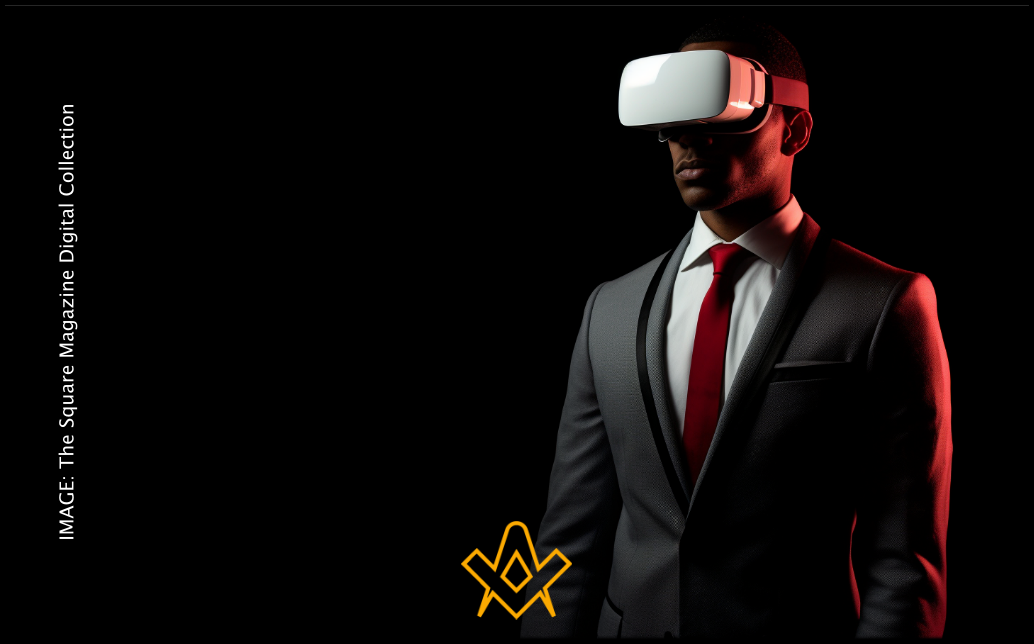
Attention
Researchers & Freemasons
We, Freemasons, stand at the precipice of a new era, where technology and tradition converge to create immersive experiences that transcend physical boundaries. The potential of Virtual Reality (VR) in enriching Freemasonry rituals is immense, and we invite you to be a part of this ground-breaking endeavour.
Ex Libris Academy is embarking on a pioneering project to implement VR in Freemasonry rituals. We are calling upon researchers and Freemasons from all obedience to join us in this journey. Your expertise, insights, and commitment to the Masonic tradition are invaluable to the success of this project.
By joining the Ex Libris Academy, you will have the opportunity to work at the forefront of VR technology, contribute to the preservation and enhancement of Freemasonry rituals, and shape the future of Masonic experiences. This project is not just about leveraging technology; it’s about fostering a deeper understanding of Freemasonry rituals, enhancing accessibility, and creating a more immersive and interactive Masonic experience.
Whether you are a seasoned researcher, a technology enthusiast, or a Freemason passionate about preserving and enriching our traditions, your contribution can make a difference. Together, we can bridge the gap between tradition and technology, and create a VR Freemasonry experience that is truly immersive, accessible, and true to the spirit of Freemasonry.
Join us at Ex Libris Academy. Let’s embark on this exciting journey together, and shape the future of Freemasonry rituals in the era of Virtual Reality.
To join or learn more about this project, please visit our website or contact us directly. We look forward to welcoming you to our team.
Ex Libris Lodge 3765 is a private lodge warranted by the United Grand Lodge of England. Membership to the lodge is open to all Freemasons who are members of Grand Lodges recognised by UGLE.
Ex Libris Academy is a private UK Registered company. The principle objective to research the future practices of Freemasonry in the digital age. Subscription to the academy is open to all Freemasons from all obedience.
Join the Prestigious
Ex Libris Lodge 3765
A Unique Freemasonry Experience Awaits

Ex Libris Lodge 3765 – Hall Stone Lodge – Freemasons Hall. London. England
image: creagh warren private collection
Are you seeking a unique Freemasonry experience that combines tradition, prestige, and camaraderie?
Look no further than Ex Libris Lodge 3765, a private lodge warranted by the United Grand Lodge of England (UGLE), consecrated on 18th February 1916.
Ex Libris Lodge 3765 is not just a lodge; it’s a community of like-minded individuals who value tradition, personal growth, and brotherhood. As a member, you’ll have the opportunity to participate in rich, symbolic rituals, engage in meaningful discussions, and form lifelong bonds with fellow Freemasons.
What sets Ex Libris Lodge 3765 apart is our commitment to inclusivity. We welcome Freemasons from all Grand Lodges recognised by UGLE. Our members bring a diversity of experiences and perspectives, enriching our lodge and strengthening our fraternity.
By joining Ex Libris Lodge 3765, you’ll be part of a diverse and inclusive community that values each member’s unique contribution.
Don’t miss out on this opportunity to enhance your Freemasonry journey.
Join Ex Libris Lodge 3765 today and experience Freemasonry like never before.
Visit our website or contact us directly to learn more about membership. We look forward to welcoming you to our esteemed community.
The Ex Libris Lodge 3765 is currently open, and accepting applications for joining members and candidates for initiation into Freemasonry.
Ex Libris Lodge 3765 - Application Form
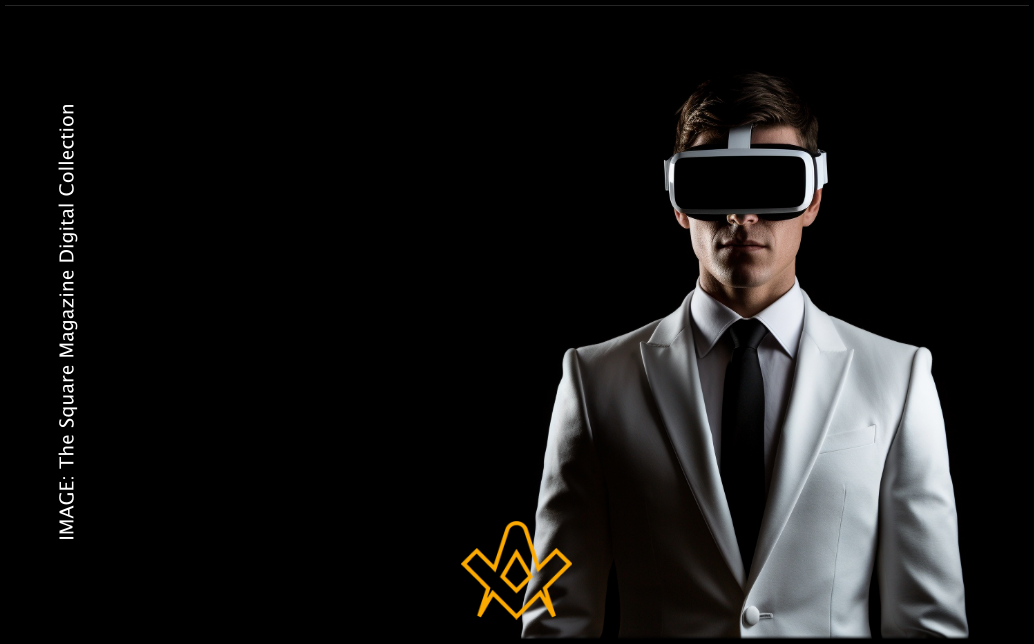
Shape the Future of Freemasonry
in the Digital Age with
Ex Libris Academy
Are you passionate about Freemasonry and intrigued by the possibilities of the digital age? Do you envision a future where tradition and technology converge to create an enhanced Masonic experience? If so, we have an exciting opportunity for you.
Ex Libris Academy, a private research company, is dedicated to exploring the future practices of Freemasonry in the digital age. We are at the forefront of this unique intersection of tradition and innovation, and we are committed to preserving the rich history of Freemasonry while embracing the opportunities that technology offers.
By subscribing to Ex Libris Academy, you will join a community of forward-thinking Freemasons from all obediences. You will have access to cutting-edge research, participate in thought-provoking discussions, and contribute to the evolution of Freemasonry practices in the digital age.
Imagine being part of a movement that shapes the future of Freemasonry, ensuring its relevance and vibrancy for generations to come.
Don’t miss this opportunity to be part of the future of Freemasonry. Subscribe to Ex Libris Academy today and join us in this exciting journey.
Visit our website to learn more about our mission and to subscribe. Together, let’s embrace the future of Freemasonry in the digital age.
Ex Libris Academy - Subscription Application
Article by: Nicholas J Broadway

Nicholas was initiated into Freemasonry in 1989 in Stonewell Lodge No. 9137, Essex England (UGLE) and was Master in 1995, 2011 and 2016. He also joined other UGLE craft Lodges and is a PZ in the Royal Arch Chapter.
He acquired the title of The Square Magazine in January 2020 and oversees the technical running of the digital publication.
Articles by Others: VR/AR/AI metaverse freemasonry
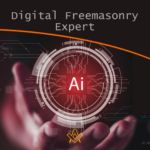 In the ever-evolving world of technology, artificial intelligence (AI) has revolutionized various industries, and now it's making its mark on Freemasonry. The Official Digital Freemasonry Community (ODFC) has introduced the "Digital Freemasonry Expert" AI tool, which aims to provide Masonic members with quick and accurate access to information, historical facts, and answers to their burning questions. This groundbreaking tool not only enhances the Masonic experience but also encourages dialogue and a deeper understanding of Masonic heritage. Join ODFC in embracing the digital transformation of Freemasonry and paving the way for innovation. |
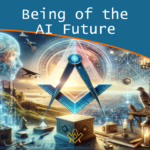 Being of the AI Future: Reflecting on the Knowledge of the Self Being of the AI Future; critically examines the shift from traditional power dynamics to data control in the AI era. It challenges us to rethink evolution and self-identity amidst AI's rise, highlighting Freemasonry's role and the need to balance technological progress with preserving human values. |
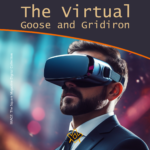 The Virtual Goose and Gridiron In a digital era where virtual reality blurs the lines between the tangible and the intangible, Masonry explores the metaverse. Here, a Masonic Hall stands grand in the virtual expanse, its public symbols beckoning seekers and brethren alike. Within, curated materials and private chambers offer knowledge and connection, transcending physical limits. |
 Freemasonry and Generative AI – Part 2 Freemasonry meets Generative AI: Dive into the profound intersection of ancient Masonic principles and cutting-edge artificial intelligence. Explore the ethical conundrums, ontological debates, and the evolving role of AI in Masonic traditions. Will Brother AI soon join the Masonic ranks? A must-read for tech enthusiasts and Freemasons alike. |
 The article explores using Virtual Reality (VR) for Masonic rituals, offering immersive experiences beyond traditional methods. While VR ensures consistent quality and flexibility, it might reduce group interactions. The author suggests Masonic bodies consider VR for specific rituals, highlighting its future potential. |
 Venturing into the Virtual Lodge: A Revolutionary Approach to Freemasonry Unlock the celestial secrets of Freemasonry! Discover how Masonic rituals transcend physical boundaries, reaching for the stars in a VR space. Join us on a cosmic journey, where ancient traditions meet cutting-edge technology under the watchful eye of the comet above. The future of Freemasonry is here! |
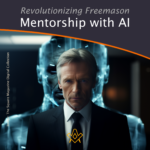 Revolutionizing Freemason Mentorship with AI Explore the intricate relationship between Freemasonry and mentorship in this captivating article. Unearth the rich history of this secretive fraternity, the symbol-laden rituals, and the transformative power of mentorship within the brotherhood. Delve into challenges faced and the potential impact of AI on Freemasonry mentorship. Immerse yourself in this intriguing journey! |
 The Future Use of Virtual Reality for Freemasonry Ritual Experience Freemasonry like never before! Dive into our ground-breaking research on harnessing Virtual Reality (VR) for Freemasonry rituals. We're transforming centuries-old traditions into immersive, accessible experiences. Discover how we're bridging the gap between historical symbolism and cutting-edge technology. Join us on this exciting journey into the future of Freemasonry! |
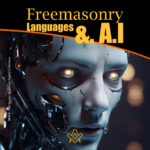 Unlock the enigmatic world of Freemasonry as we delve into its secret language. Explore the fascinating intersection of Generative AI and the Turin Test, unravelling the hidden codes and symbols that have intrigued generations. Discover the mysteries behind this ancient craft in our captivating introductory article. |
 Discover the exciting intersection of Freemasonry and AI. Explore how programming personal AI robots with Masonic principles like brotherly love, relief, and truth can revolutionize our interaction with technology, fostering a more ethical and empathetic AI future. Dive into the world of the Freemason AI robots now! |
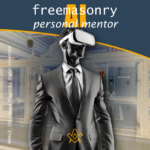 Imagine you are an AI-based personal development coach. Describe a subscription service that leverages cutting-edge technology and behavioural science to help users achieve their personal growth goals. What features would it have, and how would it keep subscribers engaged month after month? |
 Artificial Intelligence and its uses: from Society to Freemasonry Just as AI is not a panacea or a disaster, and the result depends on its use, so its application in Masonry will be beneficial and not counterproductive if the Brothers apply it constructively. By George Thanasoulas |
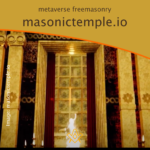 Metaverse freemasonry takes one step closer to become a reality as the Portuguese based company, Skyunicron, show case their Solomon Temple in the metaverse platform, a place for all Freemasons to meet in brotherly love and harmony, which at all times characterises freemasonry. Lets take a short tour….. |
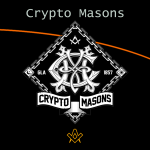 One of the first initiative for Masonic Art NFT collections with philanthropic goals supported by a regular Grand Lodge, in this case, the Great Lodge of Argentina of Free and Accepted Masons. |
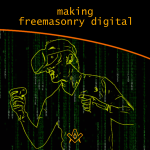 How do we prepare to make Freemasonry digital? Once we strip away the Masonic packaging, we are left with pure Freemasonry, which is not physical but content. |
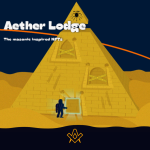 The vision is to satirize the many existing myths and preconceptions about Freemasonry by building a united community around an engaging story with multiple benefits. Aether Lodge consists of 9990 Masonic-themed NFTs divided into multiple collections. |
 What connects Freemasonry and Bitcoin ? Both are misunderstood and ridiculed by the ill-informed. If freemasonry is about being a better citizen of the world. Then Bitcoin is about: making the world a better place for all citizens |
 Metaverses, Masonry and Minecraft: The Future of Lodges Should Freemasons be proud that a clandestine group has borrowed their symbolism and ideology and transplanted it into a server known as ‘The Worst Place in Minecraft’? Metaverses, Masonry and Minecraft: The Future of Lodges |
 Freemasonry and the Metaverse P2 In this second instalment, Freemasonry and the Metaverse. We discusses the importance of being an open source protocol and how could Freemasonry benefit from a metaverse structure? |
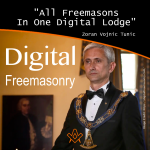 All Freemasons In One Digital Lodge; Is this viable?, is it practical ?, is it even possible ? To answer this question we need to under the problem "Digital Freemasonry" aims to fix. |
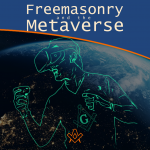 Freemasonry and the Metaverse P1 There is growing interest in the Freemasonry and the Metaverse on social media. Some projects are starting out as Masonic art NFT collections, while others are more clearly see a point in the future where they will be lodges operating in a metaverse. |
 Great Architect of the Metaverse Are you ready to meet in the metaverse ? what can you expect to see and do ? |
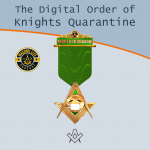 The Digital Order of Knights Quarantine Called “The Digital Order of Knights Quarantine”, it was advertised as “not-a-degree” because it was not an actual degree. |
 What would make a good Masonic phone app? Share one feature you would include in a phone app for Freemasons . . . |
masonic knowledge
to be a better citizen of the world
share the square with two brothers

click image to open email app on mobile device



